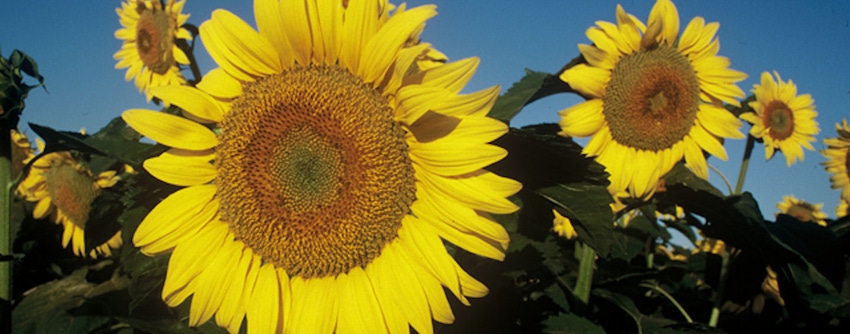
Crush plants are expected to be out early offering 2017 new-crop NuSun and high-oleic contracts that have cash and/or act of God production clauses. Crushers will want to regain the acreage lost this year, so new-crop sunflower prices are expected to be very competitive in relation to other crops.
The vast majority of the sunflower crop has been rated in the good to excellent categories in Colorado, Kansas, North Dakota, South Dakota and Minnesota throughout the growing season. This should mean that yields will be above trend, assuming normal weather through the rest of this fall. Crop conditions have turned around significantly in the High Plains states of Colorado and Kansas from previous years when most of the sunflower crop was rated as being in very poor to poor condition due to drought conditions.
Market analysts are expecting U.S. sunflower yields to be above the five-year average this year. USDA will provide its updated yield and production estimates for sunflower this month.
According to USDA, area planted to oil-type sunflower varieties in 2016 decreased 8% from 2015 and totals 1.40 million acres. Even with the likelihood of above-trend yields, this will probably result in a smaller 2016 U.S. sunflower crop compared to last year. Sunflower seed stocks will be tighter in the 2016-17 market year, and there is a strong likelihood that price premiums will be in place as crushers and bird food plants compete for available seed. Hamburg-based Oil World is anticipating world vegetable oil prices to see only limited downward potential at current levels. This is good news for high oil-bearing crops such as sunflower. 2015-16 world vegetable-oil stocks are expected to decline by 1.3 million metric tons while consumption is increasing by 4.7 MMT. This will create an unprecedented production shortfall. The shortfall is being created by the combined decline of world production of palm, lauric and rapeseed oils. This should open up significant buying interest to the benefit of sunflower oil to fulfill market demand. The reduced oil supply should lead to oil providing a larger share of the crush value, thus further supporting seed prices at the crush plants.
In preparation for harvest, producers are cleaning out storage bins, and deliveries to crush plants have been on the increase. This, along with new-crop deliveries, could pressure prices temporarily in the near term. Other variables that will affect the markets in addition to supply-and-demand factors will likely include strength of the U.S. dollar and uncertainty in demand from China. The U.S. dollar remains strong versus other currencies, and expectations are that it will stay that way through 2017. The downside of a stronger U.S. dollar is that it could lead to a slowdown in exports as importers look for cheaper sources of product. China may import fewer soybeans than expected this year as it produces more, plus selling supplies from its domestic reserves. To keep up with price movement, see sunflowernsa.com.
Sanbakken is executive director of the National Sunflower Association in Bismarck, N.D.
How sunflowers track the sun
The journal Science reported recently that University of California, Davis, researchers figured out how young sunflower plants track the sun from east to west during the day and turn back east overnight.
Sunflowers have a circadian rhythm. During the day, cells on the eastern sides of sunflower stems grow slightly longer than those on the west, which causes the heads to turn west. At night, the cells on the western side grow longer, which tilts the head to the east. As sunflowers mature, they stop tracking the sun and mostly face east, which turns out to be an advantage, too. East-facing sunflowers warm up faster than others and attract more bees, which pollinate the seeds. In trials, east-facing sunflowers attracted five times as many bees. — Lon Tonneson
About the Author(s)
You May Also Like






